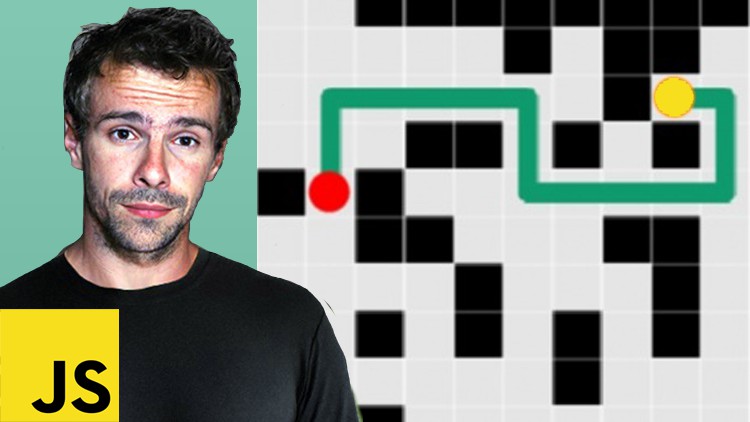
Learn how to use the most popular path finding algorithms and build your first grid with JavaScript
What you will learn
Students will learn how to use the most popular path finding algorithms
Will be able to create a visualization tool for drawing paths
Will be able to make their own grid structure to view path finding algorithms in action
Be able to implement path finding algorithms with ease
Description
This course will help you understand path finding, and will assist you in implementing it in JavaScript.
We will cover how to create a grid from scratch and implement our very own path finding algorithm.
By the end of this course you’ll have mastered the path finding algorithms available using javascript.
You will be able to create fast applications ( and reliable ) by using the best path finding algorithms. The codebases are open source, I’m going to guide you on how to implement them and how create your very own visualization app.
All lessons taught in this course are going to be valuable in your future learning, and you can have a really impressive project at your portfolio by the end of it. So what are you waiting for ?
Let’s get started!
WHAT IS PATH FINDING ?
Pathfinding or pathing is the plotting, by a computer application, of the shortest route between two points. It is a more practical variant on solving mazes. This field of research is based heavily on Dijkstra’s algorithm for finding the shortest path on a weighted graph.
Pathfinding is closely related to the shortest path problem, within graph theory, which examines how to identify the path that best meets some criteria (shortest, cheapest, fastest, etc) between two points in a large network.
PATH FINDING ALGORITHMS
At its core, a pathfinding method searches a graph by starting at one vertex and exploring adjacent nodes until the destination node is reached, generally with the intent of finding the cheapest route. Although graph searching methods such as a breadth-first search would find a route if given enough time, other methods, which “explore” the graph, would tend to reach the destination sooner. An analogy would be a person walking across a room; rather than examining every possible route in advance, the person would generally walk in the direction of the destination and only deviate from the path to avoid an obstruction, and make deviations as minor as possible.
Content